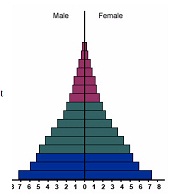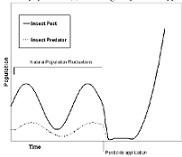Assignment:
PART 1 - Multiple Choice questions
1. Which of the following is true about correlations vs. experiments:
a. Experiments are more powerful than correlations.
b. No result is absolute (experimental or correlational).
c. Sometimes the best we can do is correlational research (e.g., one earth).
d. All of the above.
e. Both A and C above.
2. To say that environmental science is mission-oriented means it is
a. a highly organized endeavor.
b. essentially an information gathering endeavor.
c. oriented toward solving problems.
d. designed to understand relationships.
3. Which of the following is not an anticipated result of global warming?
a. Extended growing seasons for crops with a corresponding increase in yield.
b. Increased frequency of droughts and widespread severity of storms
c. Increased absorption by the oceans of CO2 with a corresponding increase in ocean water pH
d. Reduction of the size of the Arctic Sea ice by 1 million sq. km in the past 30 years.
e. Change in global disease patterns
4. You are studying a wolf pack in lower Alaska for a period of 10 years. You record their birth and death rates, along with the birth and death rates of their main prey, a deer species. If this wolf population is controlled by "carrying capacity," which of the following would you expect to see:
a. Wolves are omnivores, so they will not be affected by fluctuations in the deer population.
b. As they overshoot their carrying capacity, wolf death rates will rise.
c. As they overshoot their carrying capacity, wolf birth rates will rise.
d. Their population will crash before their prey population peaks.
e. The deer population will crash 1 year after the wolves overshoot their carrying capacity.
5. Which of the following is a real difference between exponential and logistic growth:
a. Populations without resource limitations grow exponentially.
b. Populations without resource limitations are affected by carrying capacity.
c. Logistic growth starts slowly and proceeds rapidly as the population increases.
d. Logistic growth is exponential growth plus environmental resistance.
e. Both A and D.
f. All of the above are true.
6. The total productivity of an ecosystem refers to the
a. Amount of food consumed by the organisms per unit space
b. Average number of offspring produced per adult female per unit time
c. Amount of biological material produced during a certain period of time
d. Reproductive output
7. Which of the following would not be an act of predation?
a. A moose nibbling on aspen shoots
b. A crow feeding on a road-kill rabbit
c. A black bear eating blueberries
d. Disease-causing bacteria invading human lung tissue
8. The snuffleupogous, a large mammalian primary consumer, was hunted to near extinction by an overabundance of cookie monsters on the game reserve of Sesame Street. There were many efforts to control cookie monster populations until finally a past predator, the Oscar, was reintroduced to the population. Only after the reintroduction of the Oscar did the cookie monster populations' drop and the snuffleupogous recover. The Oscar was notoriously ornery and preyed on both organisms. Using only the information given above, why did the cookie monsters drop and the snuffleupogous recover?
a. The Oscar replaced the niche of the cookie monster and thus allowed the snuffleupogous to repopulate since its primary predator has disappeared.
b. The competition between the Oscar and cookie monsters took the predation pressures off of the snuffleupogouses and allowed them to recover.
c. The Oscar was a Keystone predator that, when removed, allowed for the cookie monster's population to grow and thus over harvest the snuffleupogous. Only the reintroduction of the Oscar could but the community back in equilibrium.
d. The snuffleupogous population was so low that it limited the cookie monster and Oscar populations to equilibrium resulting in all three populations recovering together.
e. Big bird is the most charismatic mega fauna in Sesame Street so it should be looked examined, not the Oscar.
9. This age structure diagram shows you the age distribution of a hypothetical population: the blue boxes denote ages 0-14; green =15-44; and maroon = 45+ years of age. Which of the following can you conclude about this population:

a. This population has slow growth like the U.S. or Italy.
b. This population has fast growth like Austria or Canada.
c. This population has great potential to harm the environment due to its fast growth.
d. This population is better for the environment than China because it has a high probability of reproduction.
e. The number of working people exceeds to number of nonworking people, which is favorable for the environment.
10. Using the below figure, which answer correctly describes what happened to the pest and/or predator populations(s) following the pesticide application?

a. The pest and predator population crashed. Both did not recover.
b. The pest and predator population crashed. The pest population then increased dramatically.
c. The predator population crashed and then increased dramatically.
d. The pest population was unaffected by the pesticide application.
e. The predator population was unaffected by the pesticide application.
PART 2 - SHORT ESSAY QUESTIONS (PICK THREE):
Write your answer on the Answer Sheet. Your answer should be 2 to 3 paragraphs, single-spaced.
11. Pick one water pollutant discussed in the textbook and design an experiment that tests if it is affecting development or growth of salamanders in a laboratory setting. Be sure to state your hypothesis, design, outline your variables, and predict your results. Discuss why you think that this class of pollutant or this particular toxin should be our highest regulation priority.
12. What economic outcomes are most controversial in regards to the BP Oil Spill? Use the Roach et al. ("Oil Spill Economics") supplemental reading to support your answer and use data and/or monetary estimates wherever appropriate.
13. Carbon dioxide is a greenhouse gas that is thought to be primarily responsible for climate change. Using this information, explain why destruction of the Earth's rain forest is thought to be contributing to global warming. Cite two scholarly articles that support your answer.
14. Find any experiment (not a correlational or observational study) in the popular press (USA Today, Washington Post, The New York Times, etc.) that relates to any topic we covered in this course. Cite the link to your study, describe its hypothesis, outline the basic design, identify the DV(s) and IV(s), and summarize the major finding(s).
PART 3 - ESSAY QUESTIONS (PICK TWO):
Write your answers on the Answer Sheet. Each answer should be 4 to 5 paragraphs, single-spaced.
15. President Franklin D. Roosevelt once sent a letter to the state governors in which he said, "A nation that destroys its soil, destroys itself."
a. What did he mean?
b. How does it related to NSCI 362? Support your answer with reference to at least two specific textbook sections .
c. What does current scientific research have to say about this issue? Support your answer with at least two external, scientific references (BLOGs, government sites, newspapers, and/or popular magazines do not count).
16. Although the U.S. is a signatory to the Kyoto Protocol, it has not ratified it. Explain how the 1997 Byrd-Hagel Resolution (1997 Senate Resolution 98;applies to this topic. Include the result of the US Senate vote on the Resolution. In your essay:
a. Was the vote by the US Senate a partisan vote (meaning just Republicans or Democrats were in favor) or a bipartisan vote (meaning both Republicans and Democrats were in favor)? Do you think our textbook authors were deficient in leaving out the results of the Byrd-Hagel
Resolution?
b. Explain the US Kyoto Protocol position during the President Clinton administration, President Bush administration, and the President Obama administration.
c. Explain your agreement or disagreement with the current US position on the Kyoto Protocol.
17. Briefly list the dominant sources of non-renewable energy currently used on this planet along with their major problems. Now, pick one form of renewable energy and describe why you think it would be the best replacement for current sources. Support your arguments with material from our course resources.